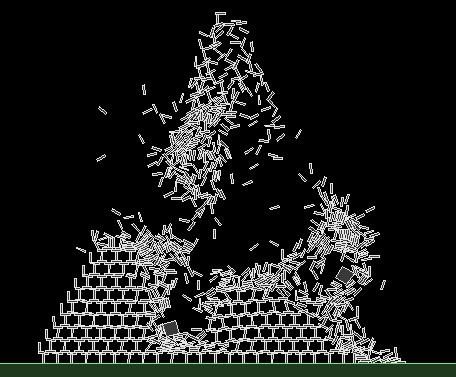Developer(s) Erin Catto Operating system | Written in C++ | |
 | ||
Initial release September 11, 2007 (2007-09-11) Stable release 2.3.1 / April 5, 2014 (2014-04-05) | ||
Box2D is a free open source 2-dimensional physics simulator engine written in C++ by Erin Catto and published under the zlib license. It has been used in Crayon Physics Deluxe, Limbo, Rolando, Incredibots, Angry Birds, Tiny Wings, Transformice, Happy Wheels, and many online Flash games, as well as iPhone, iPad and Android games using the Cocos2d or Moscrif game engine and Corona framework.
Contents
History
Box2D was first released as "Box2D Lite", a demonstration engine to accompany a physics presentation given by Erin Catto at GDC 2006. On September 11, 2007 it was released as open source on Sourceforge. On January 17, 2010 Box 2D moved the project to Google Code for hosting.
On March 6, 2008, version 2.0 was launched, introducing continuous collision detection and revamping the API.
Cross-platform availability
Box2D is itself written in platform-independent C++ (usable on any system with a C++ compiler available). The engine may be compiled in fixed point and floating point modes, and has been used on the Nintendo DS, Wii, and several mobile phones (including Android, BlackBerry 10 and iOS) as well as most major operating systems.
The engine has been ported to many other programming languages and environments, including Java, Adobe Flash (in ActionScript and Haxe languages), C#, Lua, JavaScript, and D. Bindings exist to use the compiled library from Python and DarkBasic.
On October 30, 2009, it was announced that Box2D was being integrated into the Torque 2D game engine.
Programs that use the engine
Features
Box2D performs constrained rigid body simulation. It can simulate bodies composed of convex polygons, circles, and edge shapes. Bodies are joined together with joints and acted upon by forces. The engine also applies gravity, friction, and restitution.
Box2D's collision detection and resolution system consists of three pieces: an incremental sweep and prune broadphase, a continuous collision detection unit, and a stable linear-time contact solver. These algorithms allow efficient simulations of fast bodies and large stacks without missing collisions or causing instabilities.
Related engines
An earlier version of the Box2D engine, now known as Box2D Lite, was released primarily for educational purposes, based on a series of yearly Game Developers Conference presentations that Erin Catto has given. Box2D Lite uses many of the same algorithms as Box2D, but has a smaller feature set.
The Chipmunk physics engine (written in C) and Phys2D (written in Java) are both partially based on Box2D Lite.
The physics engine used in SpriteKit for iOS and OS X uses Box2D internally.
Articles
Itterheim and Wenderlich describe the usage of Box2D in the Cocos2d iPhone engine. An article in the Adobe Edge newsletter discusses the use of Box2D in Flash games.
